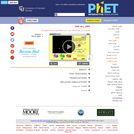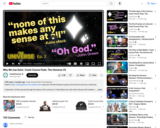
7 Results


How elements relate to atoms. The basics of how protons, electrons, and neutrons make up an atom. Created by Sal Khan.
- Subject:
- Applied Science
- Biology
- Chemistry
- Life Science
- Physical Science
- Material Type:
- Lesson
- Provider:
- Khan Academy
- Provider Set:
- Khan Academy
- Author:
- Sal Khan
- Date Added:
- 07/31/2011

In this course, we will explore what makes things in the world the way they are and why, to understand the science and consider the engineering. We learn not only why the physical world behaves the way it does, but also how to think with chemical intuition, which can’t be gained simply by observing the macroscopic world.
This 2018 version of 3.091 by Jeffrey Grossman and the 2010 OCW version by Don Sadoway cover similar topics and both provide complete learning materials. This 2018 version also includes Jeffrey Grossman’s innovative Goodie Bags, Why This Matters, and CHEMATLAS content, as well as additional practice problems, quizzes, and exams.
- Subject:
- Applied Science
- Chemistry
- Engineering
- Physical Science
- Material Type:
- Full Course
- Provider Set:
- MIT OpenCourseWare
- Author:
- Grossman, Jeffrey
- Date Added:
- 09/01/2018

Are all atoms of an element the same? How can you tell one isotope from another? Use the sim to learn about isotopes and how abundance relates to the average atomic mass of an element.
- Subject:
- Chemistry
- Physical Science
- Material Type:
- Simulation
- Provider:
- University of Colorado Boulder
- Provider Set:
- PhET Interactive Simulations
- Author:
- Emily Moore
- John Blanco
- Kathy Perkins
- Kelly Lancaster
- Patricia Loblein
- Robert Parson
- Sam Reid
- Date Added:
- 05/13/2011

This lesson introduces the concept of electricity by asking students to imagine what their life would be like without electricity. Two main forms of electricity, static and current, are introduced. Students learn that electrons can move between atoms, leaving atoms in a charged state.
- Subject:
- Applied Science
- Career and Technical Education
- Electronic Technology
- Engineering
- Material Type:
- Activity/Lab
- Lesson Plan
- Provider:
- TeachEngineering
- Provider Set:
- TeachEngineering
- Author:
- Daria Kotys-Schwartz
- Denise Carlson
- Malinda Schaefer Zarske
- Date Added:
- 09/18/2014

Students research the structure of salt to understand the difference between molecular compounds and ionic compounds
- Subject:
- Chemistry
- Physical Science
- Material Type:
- Activity/Lab
- Assessment
- Provider:
- NASA
- Date Added:
- 02/16/2011

In Episode 2 of their journey through the history of the universe, Dr. Katie Mack and John Green discuss the fundamental forces of nature, the tiny ovens we know as particle colliders, and how we all can exist.
Chapters
- Introduction
- Particle colliders
- Protons
- The Fundamental Forces
- The Theory of Everything
- The Higgs Field
- It's Incredible That We Know This Stuff
- Subject:
- Physical Science
- Space Science
- Material Type:
- Lecture
- Provider:
- Complexly
- Provider Set:
- Crash Course Pods- The Universe
- Date Added:
- 05/08/2024